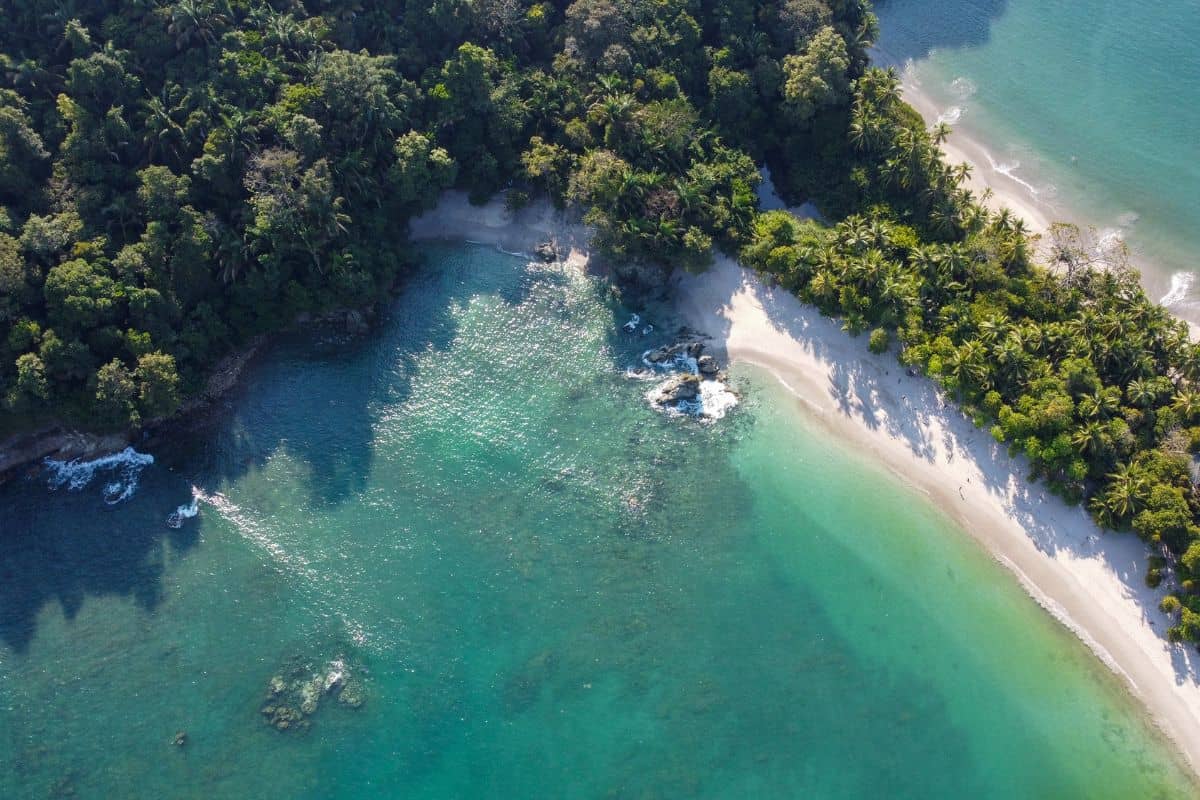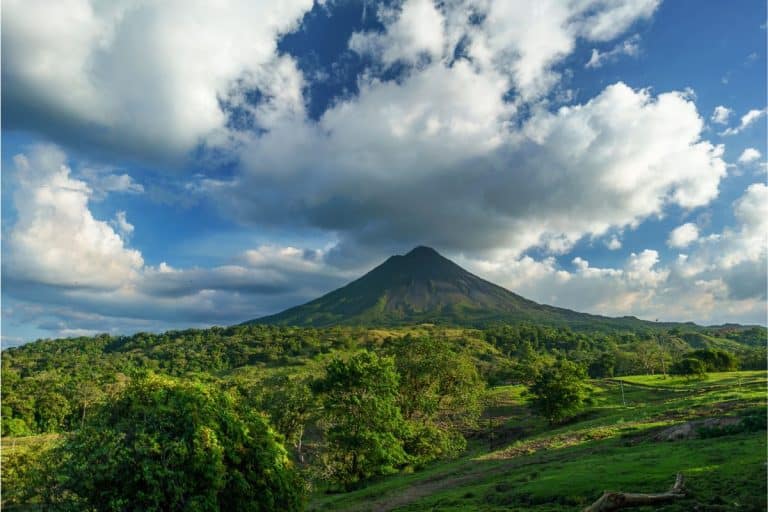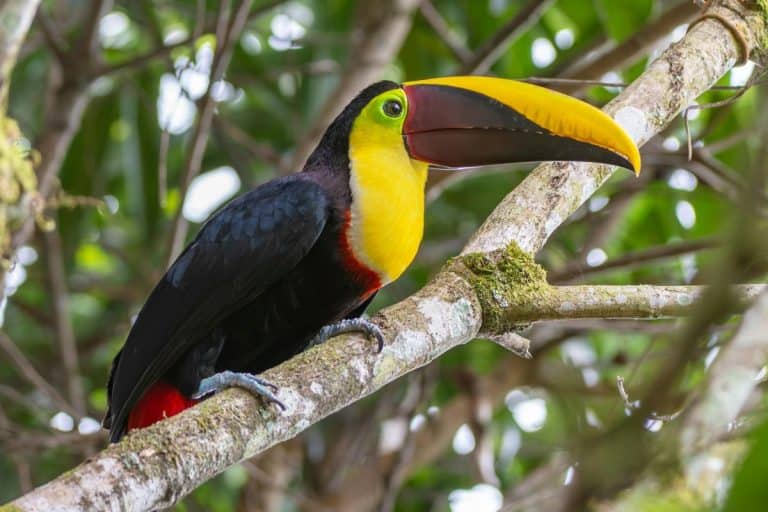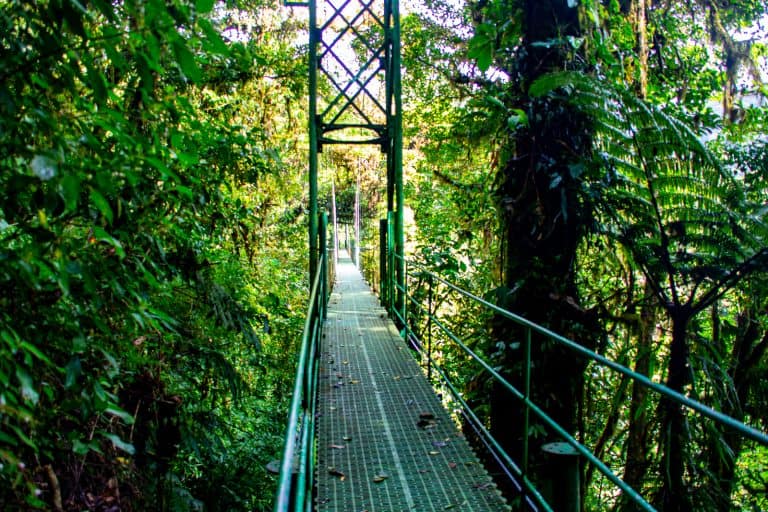Costa Rica Dry Season: Travel Guide for December to April

If you’re considering a visit to Costa Rica during its famous dry season, there are some things you need to know!
The Costa Rica dry season, known locally as “verano” (summer), is the period that offers some of the best weather conditions in the country. It brings plenty of sunshine and perfect beach conditions so it has grown in popularity as a destination for anyone looking to escape harsh winter weather.
It’s a great time to visit as long as you’re willing to embrace the higher prices and bigger crowds.
We’ve visited during the dry season and “green season” so we’re able to give you some tips and insights into both. We’re also going to tell you why we actually prefer visiting during the “green season” so you can decide when the best time to visit Costa Rica is for you!
Costa Rica Dry Season Highlights
- Guaranteed Sunshine: Virtually rain-free on the Pacific coast, perfect for beaches, sightseeing, and outdoor activities.
- Adventure-Ready Conditions: Dry trails, reliable weather, and fully operational tours mean no cancellations or muddy detours.
- Excellent Wildlife Viewing: Clear visibility and active wildlife make for unforgettable encounters.
- Peak Travel Season:
- December: Holiday celebrations
- January–March: Most reliable weather of the year
- April: Warm finale before green season begins
- Easier Access: Dry roads make driving in Costa Rica easier; flowing rivers and open national parks; ideal for exploring off-the-beaten-path spots.
Plan Your Trip With Our Favorite Resources
– Best accommodation site: Booking.com
– Book day tours here: Viator.com

Where to Stay in Monteverde, Costa Rica:
6 Standout Stays
Are you struggling with trying to figure out which hotels in Monteverde are the best? Check out our post where we give you our top picks!
READ MORE
Visiting Costa Rica in the Dry Season
While Costa Rica is known for its year-round tropical climate, the dry season offers the country’s most predictable and favorable weather conditions.
Sunny skies and minimal rainfall are the norm at this time of year for many locations making it ideal for outdoor adventures.
With virtually guaranteed sunshine, perfect beach weather, and excellent wildlife viewing opportunities, the dry season is ideal for first-time visitors, families, and travelers who prefer predictable conditions over budget savings.
Let’s take a deeper look at what you can expect month-to-month during the dry season in Costa Rica.
December: Return to High Season
Following several months of the “Green Season”, December marks the start of the high season, bringing drier weather, more sun, and larger crowds.
This is especially true in the second half of the month when families take advantage of the school vacation week between Christmas and New Year’s. It’s one of the most popular and busiest times to visit Costa Rica.
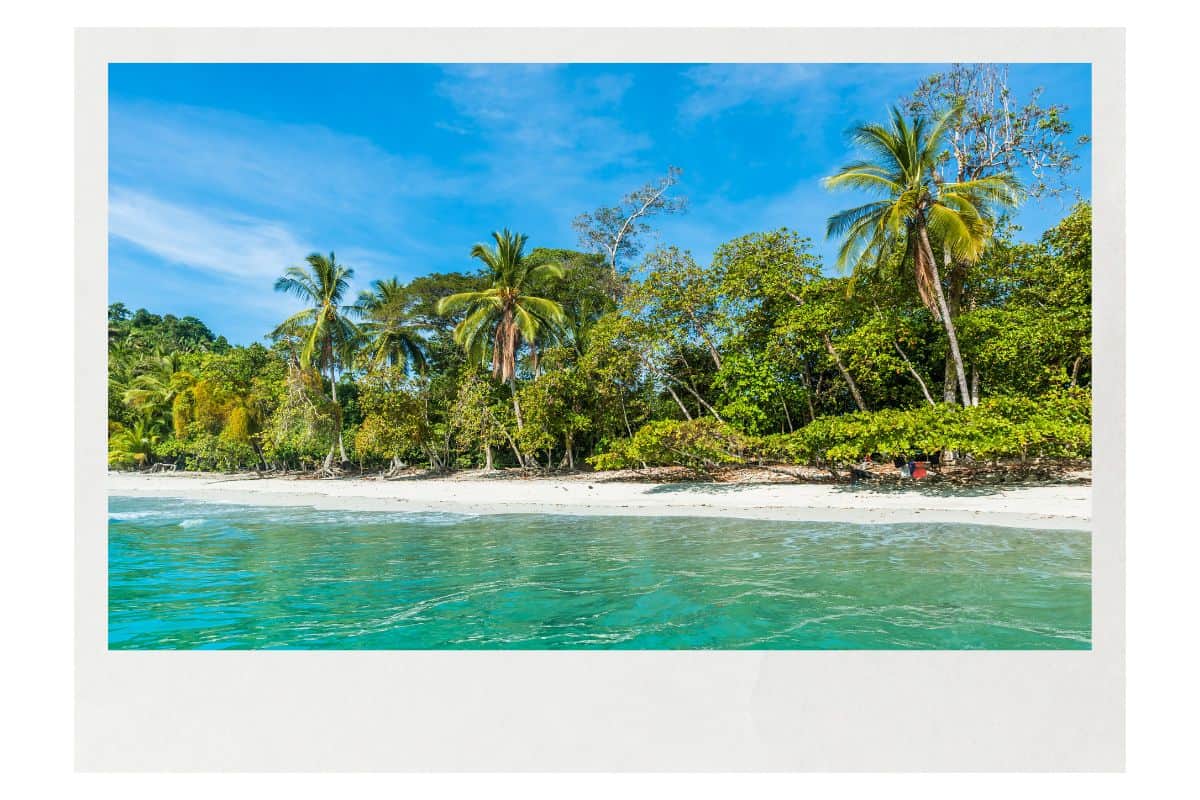
Weather
December kicks off the dry season (verano) in most of Costa Rica. This is especially true for the Pacific coast and Central Valley.
Early December may have some lingering rain in the south and mountains, but mid-to-late December brings sunny, dry, and warm conditions.
The Caribbean coast is still in its rainy season with higher humidity and occasional storms.
Quick Weather Facts For December
- Temperatures – Average temperatures range from 82–92°F (28–33°C) on the Pacific coast, 70–78°F (21–26°C) in the Central Valley, and 76–86°F (24–30°C) on the Caribbean coast
- Rainfall – Minimal on Pacific side, occasional showers on Caribbean coast
- Sunshine Hours – 8-9 hours per day on Pacific coast
- Daylight Hours – Around 12 hours per day
- Humidity – Low to moderate, except on Caribbean coast
- Water Temperature – Low to mid 80’s
Crowds
December sees a significant increase in visitors, especially during Christmas and New Year’s when popular destinations experience heavy crowds due to the U.S. school vacation week that falls between the two holiday. Accommodations usually book up months in advance for this time of year.
Travelers should expect higher prices starting mid-month for hotels, car rentals, and tours. Domestic flights and transportation get particularly busy around holidays, requiring advance planning.
Expect longer lines not only at the airports for arrivals and departures but for car rental and hotel check-ins as well.
December Events and Festivals
December festivities center around Christmas and New Year’s celebrations throughout the country that showcase Costa Rican culture and holiday traditions.
- The Festival de la Luz – This festival takes place in mid-December and transforms San José with a huge holiday parade featuring floats, lights, dancers, and music that draws crowds from across the country.
- Christmas – Celebrations (December 24–25) include midnight mass, traditional tamales, fireworks, and family gatherings, with most businesses closing for 1–2 days.
- New Year’s Eve – Fireworks, beach parties, and town celebrations are the norm with particularly big events in Tamarindo, Jacó, Santa Teresa, and San José.
Top Tips For Visiting In December
December can be a great experience in Costa Rica, especially for anyone looking for a festive atmosphere and reliable weather.
For anyone that really wants to visit in December, consider visiting in the early part of the month to avoid the heaviest crowds. You’ll still have the benefit of excellent weather conditions.
However, if you’re tied into visiting between Christmas and New Year’s, the key to visiting at this time of year is to book your accommodations and tours well in advance, as availability becomes extremely limited to non existent during this time.
December Quick Tips at a Glance
What To Pack
- Light, Breathable Clothing – Cotton and linen work best in the warm, humid conditions
- Sun Protection – Strong sunscreen, hat, and sunglasses are essential
- Light Rain Jacket – For Caribbean coast or mountain areas
- Comfortable Walking Shoes – For hiking and exploring
- Swimwear and Beach Gear – Perfect beach conditions on Pacific coast
- Insect Repellent – Essential for any outdoor activities
Where To Go
- Pacific Coast Beaches – Tamarindo, Jacó, and Santa Teresa offer perfect beach conditions
- Arenal Volcano – Clear views, hiking opportunities, and hot springs relaxation
- Monteverde Cloud Forest – Drier trails with misty atmospheres perfect for birding
- Manuel Antonio – Excellent wildlife viewing and beautiful beaches
- San José – Festive holiday atmosphere and cultural attractions
Know Before You Go
- Book Early – Accommodations and tours fill up quickly during holiday periods
- Higher Prices – Expect peak season rates starting mid-month
- Holiday Closures – Many businesses close December 24-25 and January 1
- Transportation – Domestic flights and buses get busy around holidays
January: Heart of the Dry Season
January is a continuation of late December weather and it’s a bit of a sweet spot for anyone wanting to visit in the dry season.
This month offers some of the year’s most reliable weather conditions, making it ideal for first-time visitors and those seeking guaranteed sunshine. However, it’s also going to be a quieter time to visit, especially in the latter part of the month.
While it’s still peak tourist season, it will be less busy than the holidays and well before U.S. school vacation weeks that will follow in February, March and April.
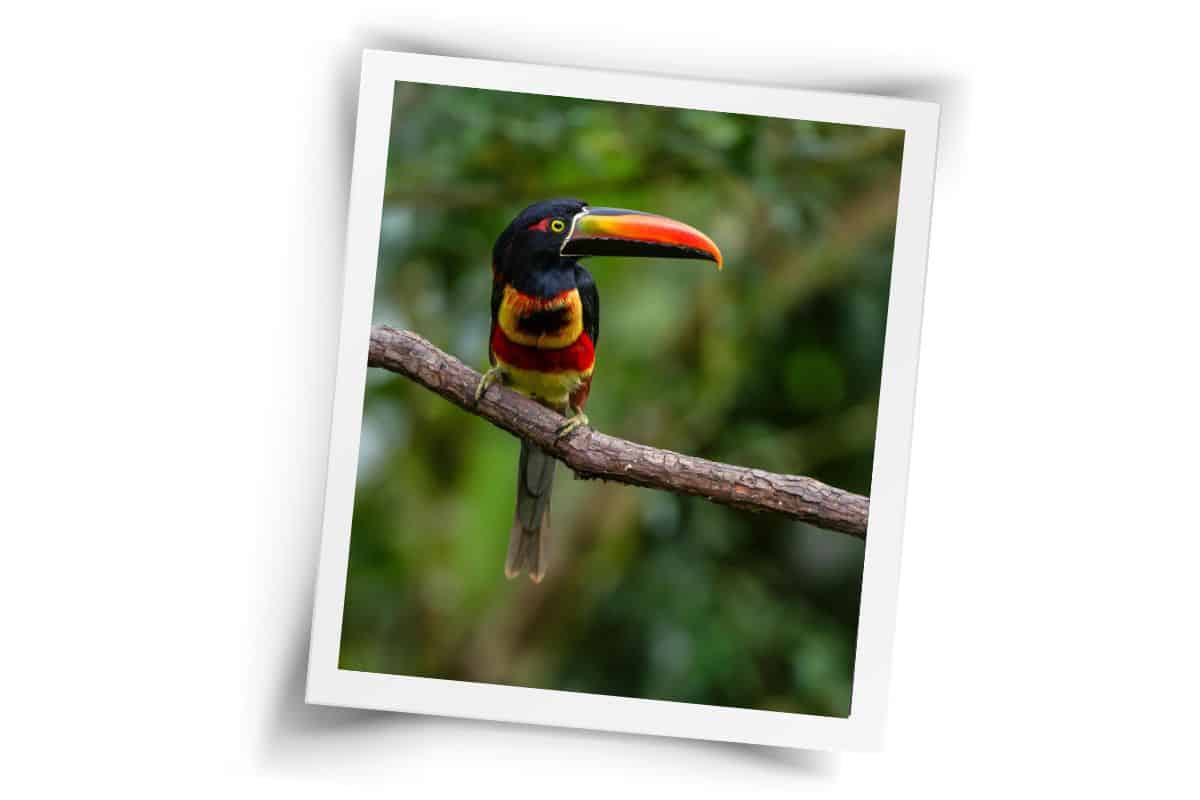
Weather
January delivers sunny days, blue skies, and low humidity, especially on the Pacific coast and in central regions like San José and Arenal. It’s perfect conditions for beach goers or anyone looking to explore further inland.
If you’re traveling to any of the lodges on the Caribbean side in places such as Tortuguero Natiional Park, you may still see some rain, but it’s generally lighter than in wetter months.
Quick Weather Facts For January
- Temperatures – Range from the mid-70s to upper-80s °F (24–31°C)
- Rainfall – Minimal on Pacific side, light showers possible on Caribbean coast
- Sunshine Hours – 8-9 hours per day
- Daylight Hours – Approximately 12 hours per day
- Humidity – Low to moderate, very comfortable conditions
- Water Temperature – Low to mid 80’s
Crowds
January is peak tourist season, especially the first two weeks with holiday and school vacation crowds spilling over from December.
Popular destinations will remain busy throughout the month as travelers take advantage of the reliable weather conditions. This means that major attractions will often be crowded, more so at the beginning of the month.
Visiting Costa Rica in January means paying some of the highest prices of the year for hotels, tours, and car rentals. Limited availability means booking months in advance for popular spots.
January Events and Festivals
Following New Year’s, there are a couple of notable events that take place in January. If you’d like a more authentic experience, check out these festivals.
- Fiesta de Santa Cruz – A festival in Santa Cruz offering dancing, music and bullfights at the beginning of January.
- Palmares Festival – Takes place in Palmares, near San Jose. Offers authentic tastes of Costa Rican culture with traditional music, food, and celebrations that provide insight into local customs.
Top Tips For Visiting In January
January offers fantastic conditions for all kinds of outdoor activities including swimming, hiking, sailing and whitewater rafting. However, the ideal conditions mean that you’re not the only one planning a visit.
Be sure to book accommodations months in advance for popular locations such as Tamarindo and Manuel Antonio.
If possible, consider visiting lesser-known destinations to avoid the heaviest crowds while still enjoying perfect weather.
Here are some additional tips to keep in mind when visiting in January.
January Quick Tips at a Glance
What To Pack
- Lightweight Clothing – Breathable fabrics for warm daytime temperatures
- Sun Protection – High SPF sunscreen, wide-brimmed hat, UV-protective clothing
- Light Layers – For cooler mountain areas and air-conditioned spaces
- Hiking Shoes – Trails are dry and accessible
- Camera Equipment – Excellent photography conditions
- Reusable Water Bottle – Stay hydrated in the warm weather
Where To Go
- National Parks – Manuel Antonio and Corcovado offer great wildlife viewing
- Adventure Activities – White-water rafting, zip-lining, and canopy tours operate at peak conditions
- Beach Destinations – Perfect conditions on Pacific coast beaches
- Volcano Tours – Clear skies provide excellent views of Arenal and other volcanoes
- Cloud Forests – Monteverde offers ideal hiking conditions
Know Before You Go
- Peak Pricing – High prices for hotels, tours, and car rentals
- Advance Booking Required – Popular spots book up months ahead
- Perfect Weather – Virtually guaranteed sunshine on Pacific side
- Wildlife Active – Excellent conditions for animal spotting
February: Perfect Balance
The arrival of February means a continuation of reliable weather, beautiful scenery, and active wildlife.
It’s also one of the busiest months of the year. With families looking to escape the winter weather in certain parts of the U.S., many seek the blue skies and warmer temperatures of Costa Rica during the school vacation weeks.
The early part of the month can be less busy but once mid-month hits, so do school vacations, and advance planning is paramount.
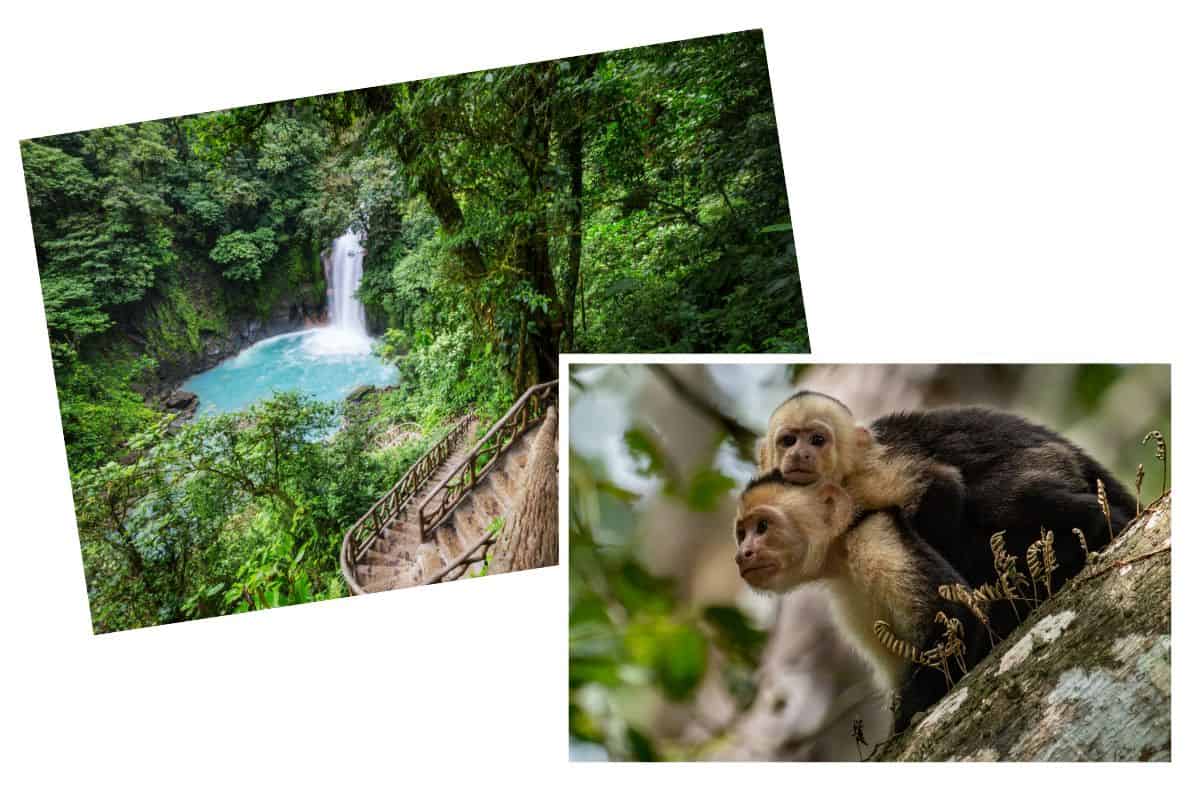
Weather
February continues Costa Rica’s verano (summer) on the Pacific side, delivering mostly dry, sunny days.
The central highlands, such as Monteverde, have cooler, pleasant conditions, while the Caribbean coast is starting to dry out a bit, receiving less rain than in previous months.
Quick Weather Facts For February
- Temperatures – Between 75–90°F (24–32°C)
- Rainfall – Minimal on Pacific side, occasional showers on Caribbean coast
- Sunshine Hours – 8-9 hours per day
- Daylight Hours – 11.5 to 12.5 hours per day
- Humidity – Low and comfortable for outdoor activities
- Water Temperature – Low to mid 80’s
Crowds
February maintains peak travel season crowds and higher hotel rates especially in popular destinations like Manuel Antonio, Arenal, and Tamarindo.
If you decide to visit in February, you’ll definitely want to book all your accommodations, flights and tours in advance to avoid missing out on your preferred choices.
February Events and Festivals
February has a couple of notable events in some areas of the country. If you happen to be staying near Puntarenas, you can check out the Carnaval for a insight into local culture.
- Carnaval in Puntarenas – week-long parades, live music, and street food festivities.
- Fiestas Patronales – in small towns with traditional bull riding (toros a la Tica), dancing, and authentic local cuisine.
Top Tips For Visiting In February
February provides ideal conditions for beach-hopping and adventure activities. The warm and dry weather makes it perfect for multi-destination trips combining beaches, volcanoes, and cloud forests.
The advance planning theme continues so be sure to book accommodations and tours weeks or even months ahead due to continued high demand.
February Quick Tips at a Glance
What To Pack
- Summer Clothing – Light, quick-dry fabrics for warm weather
- Sun Protection – Essential for beach and outdoor activities
- Light Sweater – For cooler highland areas in the evening
- Waterproof Bag – For water activities and potential Caribbean coast rain
- Comfortable Sandals – For beach destinations
- Hiking Gear – Excellent trail conditions throughout the country
Where To Go
- Beach Destinations – Tamarindo, Santa Teresa, and Dominical offer perfect surfing and beach conditions
- Adventure Areas – Arenal, Monteverde, and Rincón de la Vieja provide excellent hiking and zip-lining
- Water Activities – Snorkeling and diving off Cahuita or Gulf of Papagayo offer optimal visibility
- Volcano Tours – La Fortuna benefits from clear skies and comfortable temperatures
- Wildlife Parks – National parks offer excellent animal viewing opportunities
Know Before You Go
- Peak Season Continues – High prices and crowds remain throughout February
- Perfect Weather – Reliable sunshine with minimal rain concerns
- Advance Reservations – Popular attractions and accommodations require early booking
- Optimal Photography – Clear skies provide excellent conditions for landscape and wildlife photos
March: Peak Season Glory
March represents the pinnacle of Costa Rica’s dry season, offering the most predictable sunny weather and the hottest temperatures of the year, particularly along the Pacific coast.
This month attracts peak tourist numbers but rewards visitors with virtually guaranteed excellent weather conditions.
One thing to keep in mind if you’re visiting multiple locations within the country in March or any other time of year, weather can vary significantly from one destination to another.
To give you an idea of the vast difference in weather, we visited both Monteverde and Tamarindo during our recent visit in March. Monteverde’s weather was in the upper 60’s to low 70’s with wind and drizzle the entire time. Tamarindo had full sun, no rain, no humidity and temps in the low 90’s during the day.
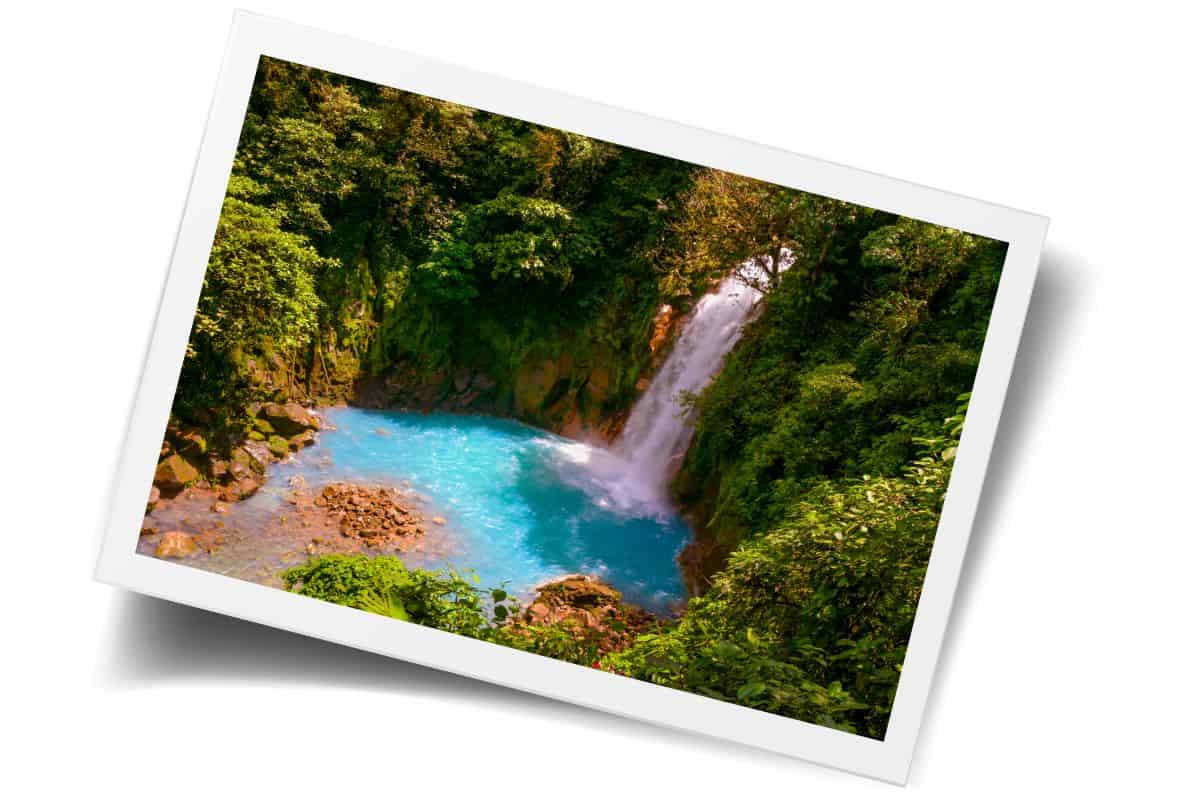
Weather
March has some of the driest conditions of the year, especially on the Pacific coast. Daytime temperatures can reach well into the 90s. Nighttime is pleasant and comfortable making it ideal for dining al fresco.
The Caribbean coast maintains its variable pattern with possible scattered showers but still offers warm, tropical conditions.
Quick Weather Facts For March
- Temperatures – Reach 80–95°F (27–35°C) with minimal rainfall
- Rainfall – Virtually none on Pacific side, minimal elsewhere
- Sunshine Hours – 9-10 hours per day
- Daylight Hours – Approximately 12 hours per day
- Humidity – Low and very comfortable
- Water Temperature – Low to mid 80’s
Crowds
With the continuation of school vacations throughout March, tourist numbers are still at their peak.
Expect massive crowds during Semana Santa (Easter Week) if it falls in March, when both international tourists and local families take advantage of the holiday period to visit beaches and popular destinations.
High prices remain in effect, especially around spring break and Easter. Very hot temperatures can exceed 90°F (32°C), particularly in lowland areas.
Some regions begin showing drier, browner vegetation as the dry season reaches its peak intensity, and advance booking becomes essential as all accommodations and activities fill up quickly.
Events and Festivals
March frequently hosts local festivals, parades, and traditional rodeos (fiestas patronales) in smaller towns throughout the country, providing authentic cultural experiences away from the main tourist areas.
If Easter (Semana Santa) falls in March, expect vibrant religious celebrations and extremely busy travel periods, especially on beaches where both locals and tourists gather for holiday festivities and family time.
Top Tips For Visiting In March
March has ideal conditions for all outdoor activities with guaranteed sunshine and no weather-related activity cancellations, making it perfect for ambitious itineraries.
However, the very hot temperatures require extra attention to hydration and sun protection, particularly during midday hours.
Book all accommodations and activities well in advance due to peak demand, and consider visiting popular attractions early in the morning or late afternoon to avoid both crowds and the hottest temperatures.
March Quick Tips at a Glance
What To Pack
- Lightweight, UV-Protective Clothing – Essential for very hot conditions
- Maximum Sun Protection – High SPF sunscreen, protective hat, sunglasses
- Cooling Accessories – Cooling towels, portable fan for very hot days
- Plenty of Water – Extra hydration needs in hot weather
- Light, Breathable Shoes – For hot pavement and trails
- After-Sun Care – Aloe vera or cooling lotions for sun exposure
Where To Go
- Beach Destinations – Tamarindo, Nosara, and Santa Teresa offer perfect surfing and beach relaxation
- National Parks – Corcovado, Arenal, and Monteverde benefit from dry trails and clear skies
- Adventure Activities – Zip-lining, white-water rafting, and canopy tours operate at peak conditions
- Marine Activities – Excellent opportunities for humpback whale watching around Uvita
- Volcano Viewing – Clear skies provide optimal visibility for landscape photography
Know Before You Go
- One of the Hottest Months – Temperatures often exceed 95°F (35°C) in lowland areas
- Peak Pricing – Highest rates remain in effect, especially around spring break
- Semana Santa Crowds – Massive crowds if Easter falls in March
- Perfect Conditions – Virtually guaranteed excellent weather for all activities
April: End of Dry Season
The arrival of April means the end of Costa Rica’s dry season is right around the corner.
This month often brings the year’s hottest temperatures while offering excellent weather conditions before the green season transition begins.
The month provides ideal opportunities for travelers seeking guaranteed sunshine with potentially fewer crowds after Easter passes. However, there are lingering school vacation weeks in the U.S. in April so high pricing will still be in effect.

Weather
April continues the hot, sunny conditions of dry season, especially in the first half of the month. By late April, some light rains may begin in southern and mountainous regions, providing hints of the upcoming green season.
This is often the hottest month with temperatures exceeding 95°F (35°C) in lowland areas. It requires careful planning for heat management and sun protection.
Some areas may appear dry and dusty, particularly in northern regions like Guanacaste, while late April rain showers may begin affecting outdoor activities as the country transitions toward green season.
Quick Weather Facts For April
- Temperatures – Range from 80–95°F (27–35°C) with minimal rainfall
- Rainfall – Minimal early month, light showers possible late April
- Sunshine Hours – 8-9 hours per day
- Humidity – Low early month, gradually increasing
- Daylight Hours – Approximately 12.5 hours per day
- Water Temperature – Low to mid 80’s
Crowds
April experiences major crowds and high prices if Semana Santa (Easter) falls during the month, creating the busiest and most expensive conditions of the entire year.
After Easter passes, many locals return to regular schedules, making the second half of April quieter and easier to navigate for international visitors.
April Events and Festivals
April features vibrant Semana Santa (Holy Week) celebrations if Easter falls during the month, bringing elaborate religious processions, community gatherings, and significant domestic tourism as locals take time off work and school to celebrate with family. These celebrations create a festive, authentically Costa Rican atmosphere but also generate massive crowds and the highest prices of the year for accommodations and activities.
Top Tips For Visiting In April
April maintains excellent conditions for beach activities and adventure tours particularly in early April which offers continued perfect weather.
Late April may see the beginning of green season transition with occasional refreshing showers but that doesn’t mean the days will be complete washouts.
You’re more likely see dry and sunny mornings with a passing shower in the afternoon.
April Quick Tips at a Glance
What To Pack
- Hot Weather Clothing – Lightest possible fabrics for very hot conditions
- Maximum Sun Protection – Critical for the hottest month of the year
- Cooling Items – Portable shade, cooling towels, extra water
- Light Rain Gear – For potential late April showers
- Heat-Resistant Footwear – Shoes that can handle hot surfaces
- Electrolyte Supplements – For maintaining hydration in extreme heat
Where To Go
- Beach Activities – Tamarindo, Nosara, and Uvita maintain excellent conditions
- Adventure Tours – Arenal, Monteverde, and Rincón de la Vieja offer optimal weather
- Early Green Season Preview – Late April rains begin reviving dry landscapes in Guanacaste
- Wildlife Viewing – Animals remain active near water sources
- Water Activities – Perfect conditions for surfing, snorkeling, and diving
Know Before You Go
- Hottest Temperatures – Often the hottest month with temperatures exceeding 95°F (35°C)
- Semana Santa Impact – Major crowds and highest prices if Easter falls in April
- Transition Period – Late April may see beginning of green season rains
- Continued Excellence – Still offers guaranteed excellent weather conditions
Essential Dry Season Planning Tips
While you don’t have to worry too much about rain, difficult driving conditions or tour cancellations, visiting Costa Rica during the dry season brings its own set of considerations.
Planning well in advance is essential to help guarantee a seamless visit especially if you’re one of the many that will visit over Christmas, New Year’s or Easter.
Here are some of our top planning tips and suggestions if you’re visiting during the dry season.
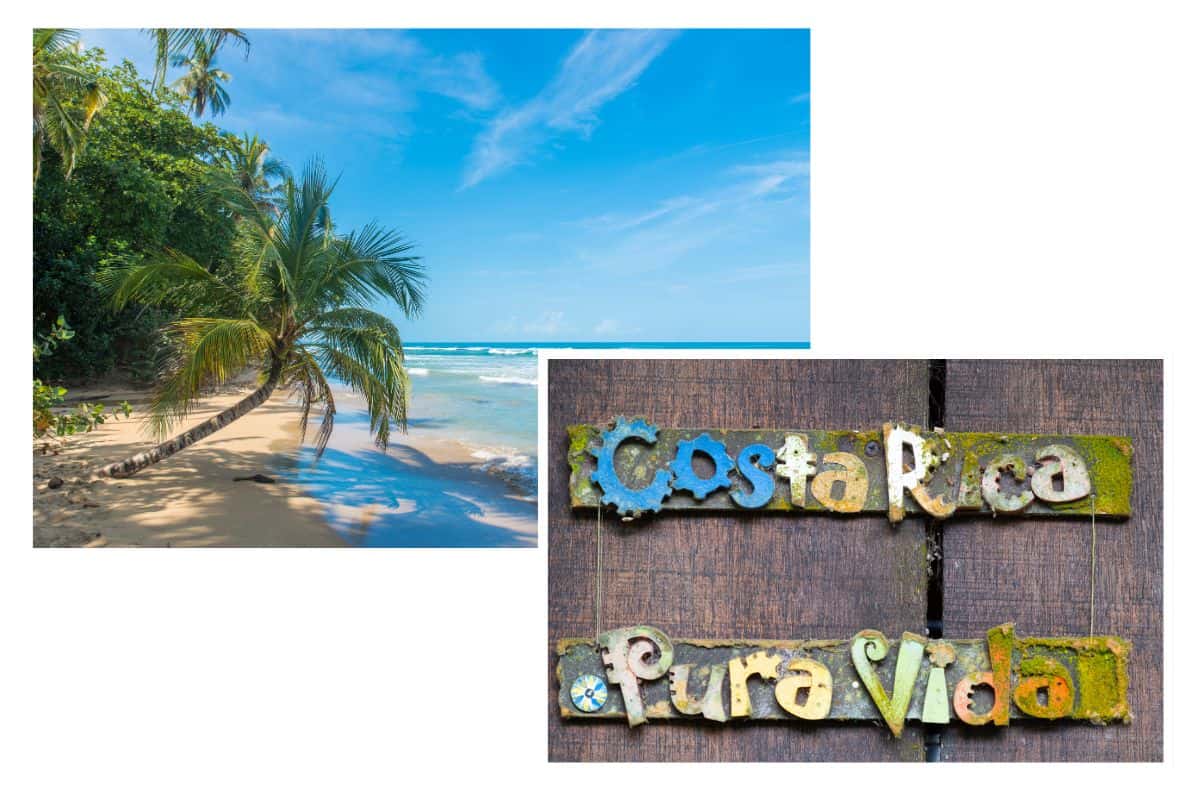

When to Book
- Book accommodations and flights at least 3-6 months in advance for popular destinations. If you’re traveling over the holidays, consider booking even further in advance.
- Car rentals and tours should be reserved well ahead of travel dates, at least 2-3 months before arrival, preferably more if visiting over a holiday.
What to Expect
- Expect 20-50% higher prices compared to green season rates
- Larger rooms will sell out quickly especially over the holiday weeks since many families travel during school vacation.
- Make restaurant reservations well in advance of arrival especially for Christmas, New Year’s or Easter dinners.
- Popular attractions fill up early – arrive at parks by opening time
- Busy common areas in hotels including beaches, pools and restaurants
- Longer lines at airports, car rental counters and hotel check-in
Crowd Management Strategies
- Visit popular sites early morning or late afternoon
- Consider lesser-known destinations like Bajos del Toro or San Gerardo de Dota
- Weekdays typically less crowded than weekends when locals travel
- Avoid Christmas, New Year’s and Easter week (Semana Santa) for the most extreme crowds
- If your hotel offers cabana or daybed rentals, consider booking one to guarantee a spot by the pool on a day you plan to be there.
- Make sure you arrive early to the airport when departing to account for the increased crowd levels.
- Consider upgrading your room to a category that includes benefits such as private pools, concierge lounges, butler service or separate check-in areas. These added services can significantly cut down on wait times and stress.
Dry Season vs. Rainy Season: What We Actually Prefer
Costa Rica’s dry season is perfect for anyone looking for guaranteed sunshine, reliable weather, and optimal conditions for outdoor activities because dry season delivers exactly that.
However, if you prefer lower prices, fewer crowds, and don’t mind occasional rain, you might consider the green season instead. The green season is actually our preferred time to visit, specifically during “veranillo” or “little summer” in July.
In a nutshell, we’re not fans of crowds. In Costa Rica, it’s not so much about crowds at the sightseeing areas. In all our visits, that’s never really been an issue.
For us, it’s the crowds at the hotels that are a bit much for us. From the lack of chairs by the pools or on the beach to no reservations available at the restaurants, we just don’t find it enjoyable especially when we’re paying a premium for flights and accommodations.
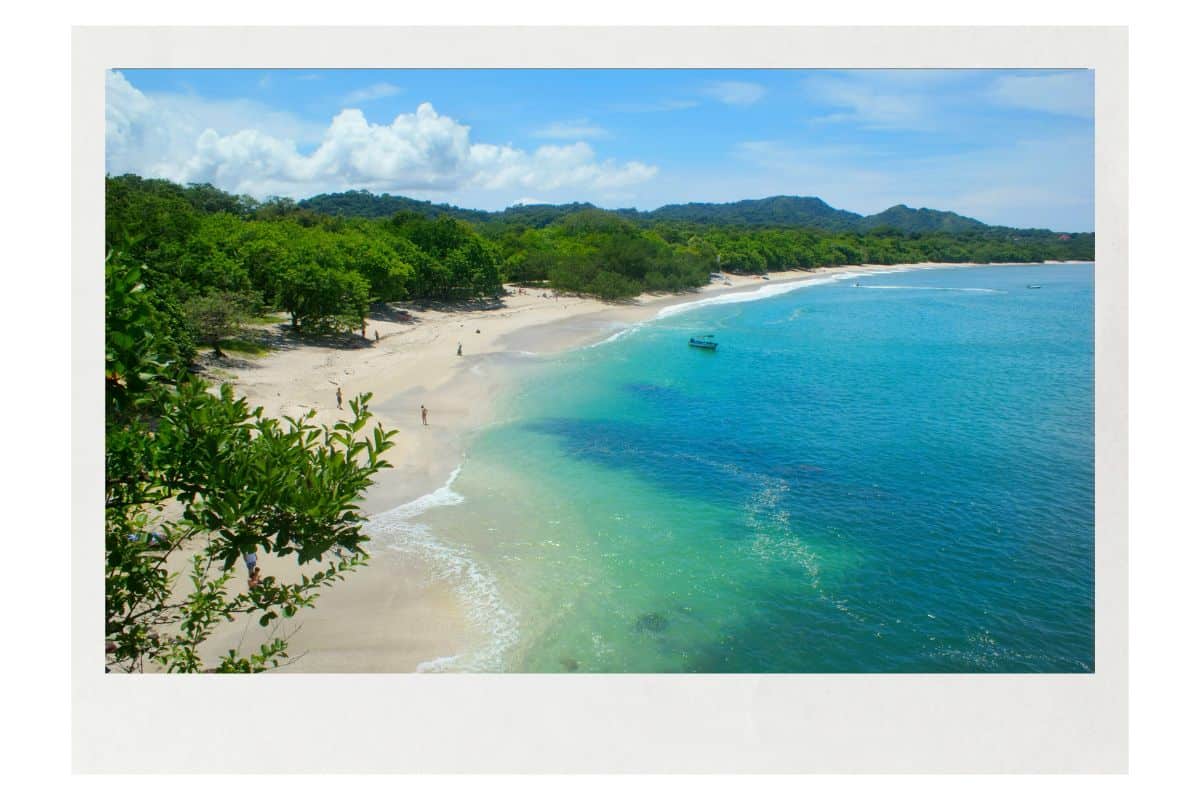
We can obviously book the restaurants in advance but we don’t always know what type of cuisine we’re going to be in the mood for on a particular night, especially months in advance.
A little spontaneity is nice once in a while and visiting during the rainy season allows us to have that.
There’s definitely a bit more rain and humidity at this time of year, but we prefer this over dealing with the crowds. To be honest, we’ve never experienced a complete washout when visiting in July, just a passing afternoon shower.
Looking for more help in planning your trip? Check out our these posts!
FAQs
There are an endless number of questions about visiting Costa Rica in the dry season. Hopefully, we’ve covered most of them but here are our answers to some of the more common questions about visiting during the peak tourist season.
What is the driest month in Costa Rica?
The driest month in Costa Rica varies depending on location. For the Pacific coast and Guanacaste area, February and March have the least amount of rain. For the Caribbean coast, September and October are typically the driest months.
What is the most expensive month to go to Costa Rica?
December through April are the peak travel months in Costa Rica and typically have the highest prices for flights and accommodations. Visiting during major holidays including Christmas, New Year’s and Easter will usually bring the highest prices of the year.
How hot does it get during dry season in Costa Rica?
Temperatures typically range from 75-95°F (24-35°C), with March and April being the hottest months. Coastal lowland areas can exceed 95°F, while highland areas remain cooler.
Final Takeaway: Should You Visit During the Costa Rica Dry Season?
The Costa Rica dry season represents the country’s most reliable and predictable travel period, offering virtually guaranteed excellent weather that makes it ideal for first-time visitors, families with children, and travelers who prioritize optimal conditions over budget considerations.
If you’re schedule isn’t flexible and you need to visit during the dry season, you’ll be rewarded with little rain, less humidity and better road conditions.
Whether you’re exploring pristine beaches along the Pacific coast, hiking through cloud forests in Monteverde, or spotting wildlife in national parks, dry season provides the perfect backdrop with sunny skies and minimal weather-related disruptions.
The key to successful dry season travel is planning well in advance, budgeting for peak season prices, and embracing the crowds you’ll inevitably encounter at the airports, hotels and restaurants.
Keep these things in mind and take everything in stride and you’re guaranteed to fall in love with Costa Rica.

